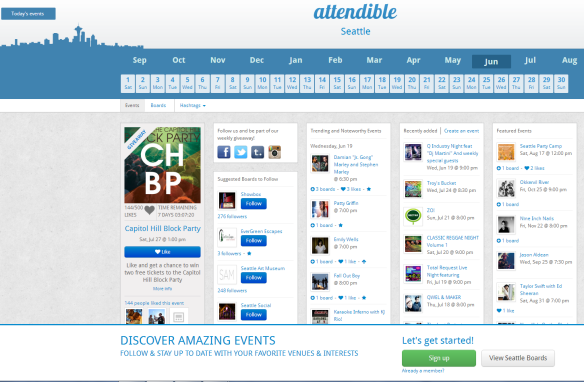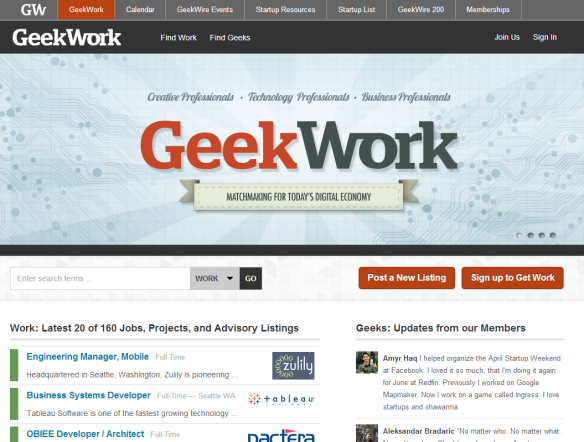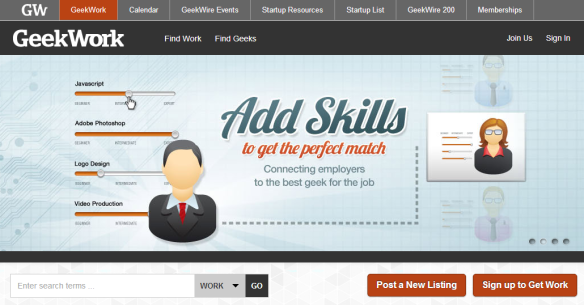Once you understand the value of a customer in each stage of the customer journey, you can start making good decisions about not only how to spend your marketing resources but also how to invest your engineering time. For example, you can use Google Analytics to measure your cost of traffic or transactions as they relate back to your Adwords campaigns, but you need to know what those actions are worth to you to make smart decisions.
Let’s start by thinking about the stages in the customer journey. For a transaction driven website there is often a natural funnel, and this might look something like:
- First time visitor
- Repeat visitor
- Registered visitor
- First time buyer
- Repeat buyer
The value of traffic
Let’s say you have 10,000 unique website/app visitors in a month and 500 transactions. That’s a 5% conversion rate. Let’s further assume that your average transaction is $50 with a 50% margin factoring all variable costs, so you are clearing $25 per transaction. But what’s the value of a visitor? That’s important to know, as it should serve as the upper limit for the marketing team when calculating the average cost to drive traffic to the site. The simplest analysis suggests it is total margin divided by number of visitors or (500 x $25)/10,000 = $1.25. That is straightforward enough; but all traffic is not created equal. Visitors do different things when they come to your site. They might make a purchase, or register to be alerted about sales or to get a whitepaper, or just leave and never come back. Google Analytics refers to the positive actions as micro conversions (e.g. registration) and macro conversions (e.g. a sale).
The value of repeat visitors
You can use an analytics tool like Google Analytics to break the visitor behavior down further. How many of the visitors were repeat visitors and what percent of purchases were made by those repeat visitors versus first time visitors. Let’s say the data shows a standard 80/20 breakout where 80% of the visitors are first time, but they only account for 20% of the purchases. That suggests that 8,000 first time visitors generated 100 transactions worth a total of $2,500. So the value of a first time visitor on a first order analysis is $2500/8000 or only $.31! The value of a repeat visitor is $2.00, derived from $10,000 in margin divided by 2,000 repeat visitors. That suggests that marketing efforts designed to drive awareness and first time traffic to the site should not exceed $.31 per visitor. Programs focused on getting visitors to come back would make sense as long as they cost less than $2.00 – $.31 or $1.69, assuming that you had already paid $.31 for their first visit. That might include retargeting ads for example.
The first order analysis is very simple, but still valuable. Second order analysis would take into consideration the percentage of first time visitors that return on their own. Let’s say that is 20%. If returning visitors are worth $2.00 and 20% of first time visitors will come back on their own, then a first time visitor’s value is increased by the chance that they will become a returning visitor, numerically by $.40. So getting first time visitors to the website is worth $.71 because some visitors will transact on their first visit, and some will naturally come back and are much more likely to transact on that second visit. This refined analysis suggests that you should be willing to spend $1.29 ($2.00 – $.71) to get first time visitors to come back.
The value of registered users
Getting visitors to return is an important aspect of any online business, whether it makes money on transactions or advertising or subscriptions. For simplicity, we’ll stay with the transaction example above. Retargeting, specifically showing users ads for your products on other sites that they visit after leaving your site, is an effective tool to generate repeat visits and purchases. The other effective tool to generate repeat visits is email. But to email users, you need their email addresses! That is why so many sites try to get you to register. Some sites ask, and some sites may require you to register. In the early days of Zulily, they forced visitors to register if they wanted to even see the deals on the site. Other sites may require registration to get beyond basic information. Forcing users to register to get access to a site is called a registration wall. We’ll get back to that.
To know what we gain when someone registers, we have to know the likelihood that we can get them to come back using email re-marketing. Remarketing can be very effective if it is personalized based on your behavior the last time you were on the site. For example, if you were browsing shoes on a website and you later get an email saying that the shoe sale has just started, then you are highly liked to return. We need to know what percentage of people will respond to our email campaigns (open rate x click through rate x number of emails sent). Let’s be generous and assume that 50% of registered users who get the email campaign over some relevant period of time return to the site. From our work above, we valued repeat visitors at $2.00. But only 50% of registered users are going to respond and visit again, so a registered user is worth $1.00. I am necessarily simplifying the analysis for the sake of clarity and brevity. We could account for the value of maintaining brand awareness from our email campaigns along with many other factors.
In all likelihood visitors who took the time to register are going to be better customers on average. The analysis above can help you decide whether to invest in a registration system. You’ll have to make some assumptions about how effective your email re-engagement marketing campaigns will be. Once you have registration in place, make sure you segment your sales by those who registered before they purchased for the first time to understand how much you should invest in getting people to register. Follow the steps above, dividing sales from that segment by the number of users in that segment. Remember that any visitor who purchases registers in the process of purchasing, so track registration prior to purchase.
When you have determined the incremental customer value derived from getting someone to register you can then determine what level of incentives you should use to motivate that behavior or how much technical development resource to invest to optimize that process.
Registration wall
Getting back to the registration wall, why not just make all visitors register? How would you decide if this was a good idea for your business? Well, two things are going to happen when you put up a registration wall. Some people will register and some people will just leave and likely never return (abandonment). You can guess at what percent will do each or you can put up a registration wall for a brief time or for a fraction of traffic as a test and get your registration and abandonment data. If setting up a test requires an engineering investment, you can calculate the breakeven assumption and gut check that. We’ll come back to that.
We’ll use our example above to value a first time visitor at $.71. So for every new visitor who abandons we lose $.71, because we have driven the likelihood that they will come back or purchase on their first visit to zero. Registrations are worth $1.00 according to our example above. To calculate the incremental customer value from the registration wall you can use the following formula where Y is the percent of visitors who register: (Y x $1.00) – ((1 – Y) x $.71). If 50% of users register the incremental value is $.50 – $.36 = $.14. If only 25% of visitors register, then the incremental value is $.25 – $.53 = -$.28, and you would be losing value. You can calculate the breakeven registration rate, which in this case is about 42%. If less than 42% of users register, you will be losing customer value.
The value of a first time customer and repeat customer
Let’s keep going along the journey. Some of your customers will transact with you only once, and some will become regular customers. One-time customers perhaps had a one time need, or found you through a search result to a specific product or via an ad or a sale or friend referral. They likely don’t have an ongoing need for your product/service or already have other sources that work well enough for them. In some cases you can motivate a first time buyer to become a regular buyer by incenting them to come back to your site to explore your offerings. In other cases, first time buyers will love the value proposition you offer and become regular customers organically.
A repeat buyer is your holy grail. Repeat customers have the highest lifetime value (LTV). In a prior post, I provided an illustration of calculating an LTV which by definition is the value of the repeat purchaser. For purposes of our calculation below, lets assume that the LTV is $100.
At the top of this article, we were clearing $25 in margin on a single purchase. So again on first order analysis the value of the first time purchaser is $25. But if 40% of those first time purchasers organically or as a result of your email remarketing campaigns go on to become regular customers, then their value increases by the increase in value between first time and repeat buyer ($100 – $25 = $75) times the percentage of those that make the transition, in this case 40% x $75 = $30. So we should be willing to spend something less than $25 +$30 = $55 to get a first time buyer. We should also be willing to incent our first time buyers to become regular buyers. That amount of that incentive should be less than $100 – $55 = $45.
Caveat
There is almost always more than one way to calculate the value of your customers through their journey. The more data you have and the more granular your segmentation the more effective your analysis can be. I have simplified the analysis and the scenarios above for clarity and brevity. There are always more nuanced ways to think through these calculations and this is meant to be a starting point for those without a lot of experience in this realm.
Next Steps
The more granularly you follow the steps in the customer journey and also segment your customers by how you acquired them and their purchase behaviors the more often you will be able to make smart decisions about how to increase value to the enterprise. If you assign those interim values in Google Analytics for example you can quickly see whether an A/B test is working for you. You can also make informed decisions around investments in marketing dollars used to acquire new and repeat traffic, motivate customer registration, and incent first time and repeat purchases.
I hope this has been helpful. Please reach out with any questions.
Cheers,
Pete
Peter.Baltaxe@gmail.com







